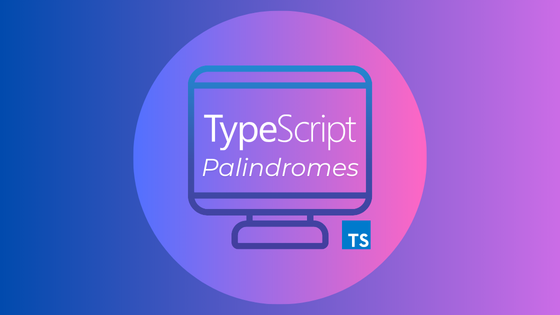
Is it a Palindrome? Or is it not?
What's a Palindrome?
You might be asking yourself...what is a Palindrome? And why do I need to write some code that will check if a string is one?
To start, a Palindrome is a word that is spelt the same backwards as it is forwards. Some examples are
- Racecar
- Level
- Civic
Each of these words result in the same word, even if you reverse their order; the resulting word is still the same as it had been prior.
It's a typical LeetCode-esque question meant to help uncover how you address an unfamiliar technical challenge and reason about it.
For this post, we'll implement a quick, and relatively easy to understand, algorithm to help us check if a provided string is indeed a Palindrome.
Our `isPalindrome` Function
Now that we know what a Palindrome is, we can get to defining our function. We will call it isPalindrome since it makes sense.
Its input argument will be a single string that we run our algorithm against to determine if it's a Palindrome. Our return value will just be a simple boolean on whether or not the string was indeed a Palindrome.
We also have a base-case that we can define at this time. For all intents and purposes, a single-character input string is technically a Palindrome, since it is the same forward and backward. So we'll include that as well.
The function signature will look like this
function isPalindrome(input: string): boolean {
// A single-character string is technically a Palindrome
if (input.length === 1) {
return true;
}
}Let's move onto the next section for a breakdown of our approach, and implementing that in the code.
The Approach to Identifying a Palindrome
To figure out how we can go about checking for a Palindrome, let's call back to what a Palindrome is, and the implications that has.
A Palindrome is the same forwards as it is backwards. Great! And what we can glean from that, is that a Palindrome is a mirror-image of a particular set of characters.
From that, we can come to the realization that the letter at the beginning of the Palindrome should have a matching counterpart at the end of the Palindrome. If we were to remove those two characters, then the subsequent leftmost and rightmost characters should be equivalent as well.
If a word doesn't satisfy this comparison; this existence of a counterpart equivalent character at the same distance from the opposite side of the word — then the word can't possibly be a Palindrome.
Considering the above, this is the approach we'll take in the code
- 1 . Convert our input to an array of its characters using
input.split(''). We'll call the variable for itinputSplit
- 2 . Using a
whileloop, where the exit condition will be whether or notinputSplitstill has a non-zero length
- 3 . Within the loop, we'll get the leftmost and rightmost characters from
inputSplit. We'll compare these two characters for equivalency. If they are not equivalent, then we know our input is not a Palindrome. If they are indeed equivalent, we'll continue onto the next iteration, until we are left with 1 or 0 characters
- 4 . By the end of the loop, if we have not encountered a scenario where the leftmost and rightmost characters are not equivalent, then our input was indeed a Palindrome
So let's code that up!
// Our Palindrome-validating function that accepts a string
function isPalindrome(input: string): boolean {
// Our approach to checking this input string for the quality of being a palindrome will be the following
// 1. A single-character string is technically a Palindrome. We'll return true immediately if this is the case
// 2. We'll split the input into an array of its characters
// 3. We'll utilize a `while` loop to check the leftmost and rightmost characters of the input string - modifying it in-place as we do so using shift and pop
// There's a base-case to handle, that once we reach a length of 1, we can consider the number a palindrome
// If at any point, our leftmost and rightmost values are not equivalent, then the input number is not a palindrome
// A single-character string is technically a Palindrome
if (input.length === 1) {
return true;
}
const inputSplit = input.toString().split('');
// Our exit- condition will be once our input split has no characters left to check
while (inputSplit.length) {
// If we've reached a length of 1 after popping and validating
// the leftmost and rightmost values, then we have a palindrome
if (inputSplit.length === 1) {
return true;
}
const leftmost = inputSplit.shift();
const rightmost = inputSplit.pop();
// The leftmost and rightmost values need to be the same for it to have been a valid palindrome
if ((leftmost === rightmost) === false) {
return false;
}
}
// Down here, we handle the case of a input string like `abba`
// Where we would have validated both the leftmost and rightmost
// values, but we end up breaking out of our while-loop due to 0 characters left
// Since we didn't encounter the failure conditions, then this had to be a palindrome
return true;
}And there we have it! The comments in the code help explain what's going on at each step, and what happens as a result of it.
See the attached GitHub Gist for the full code file.